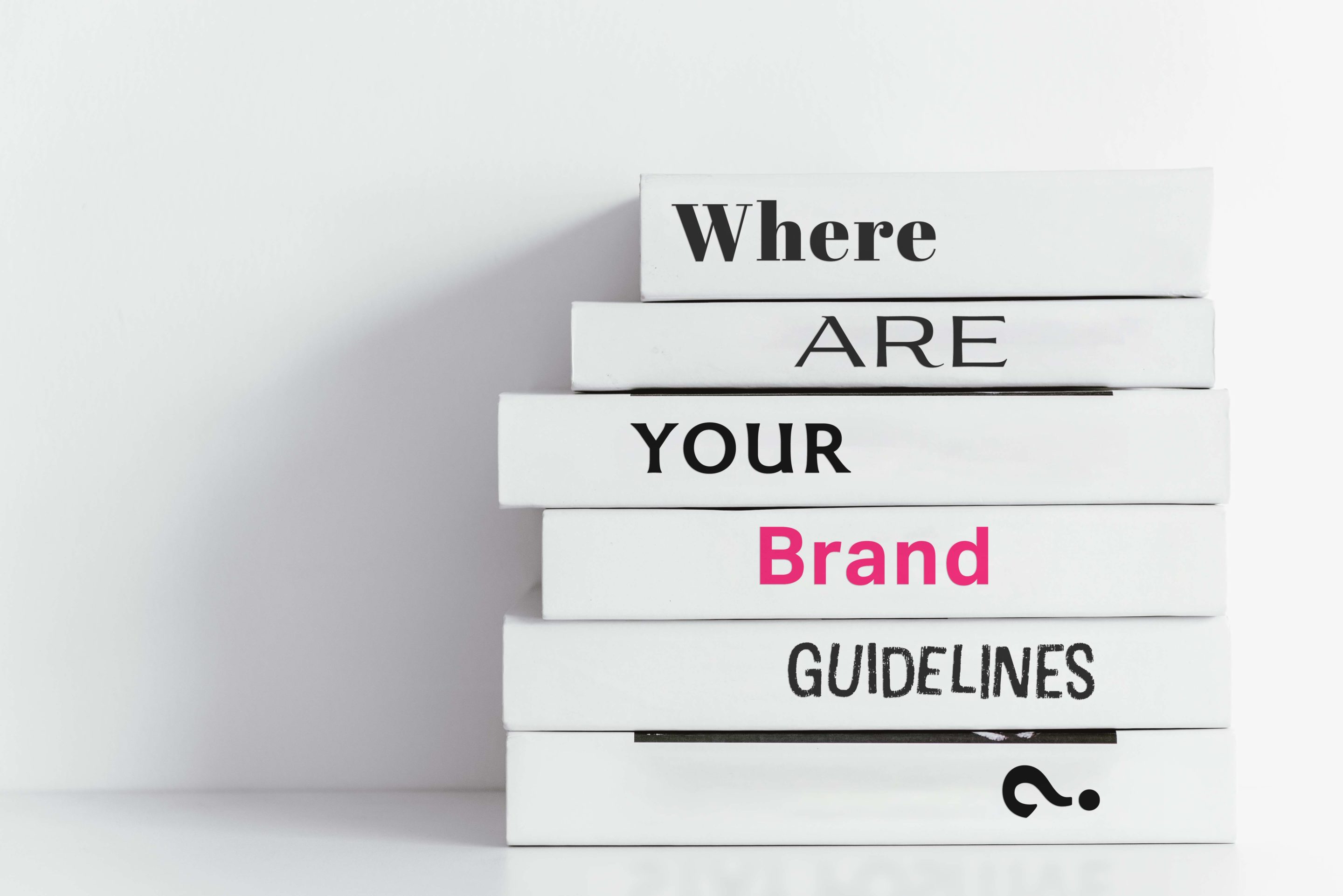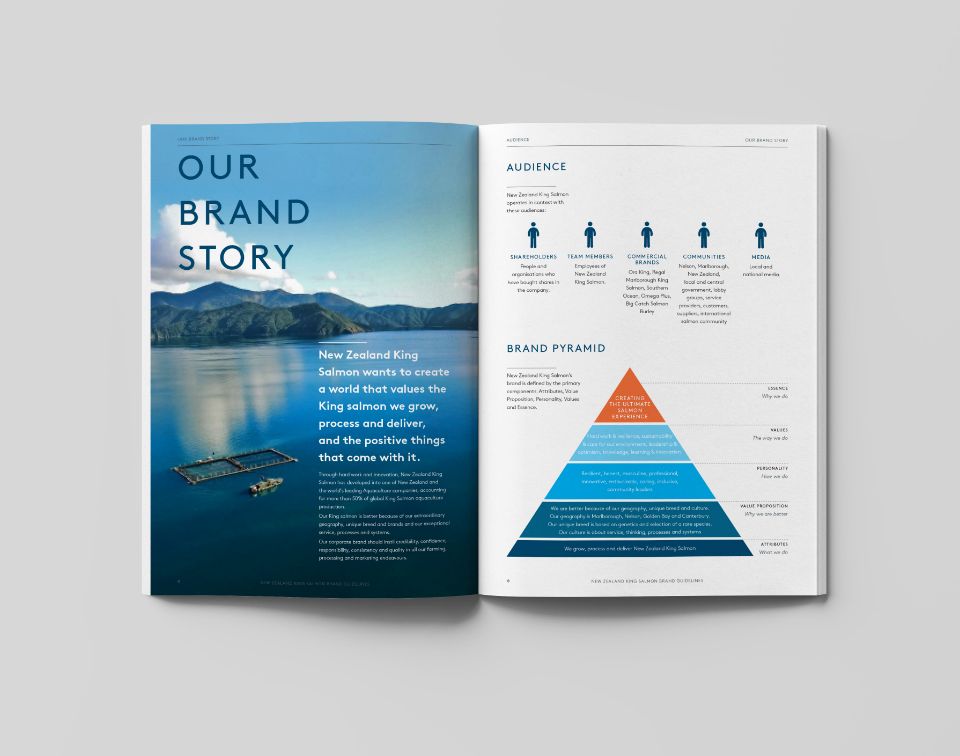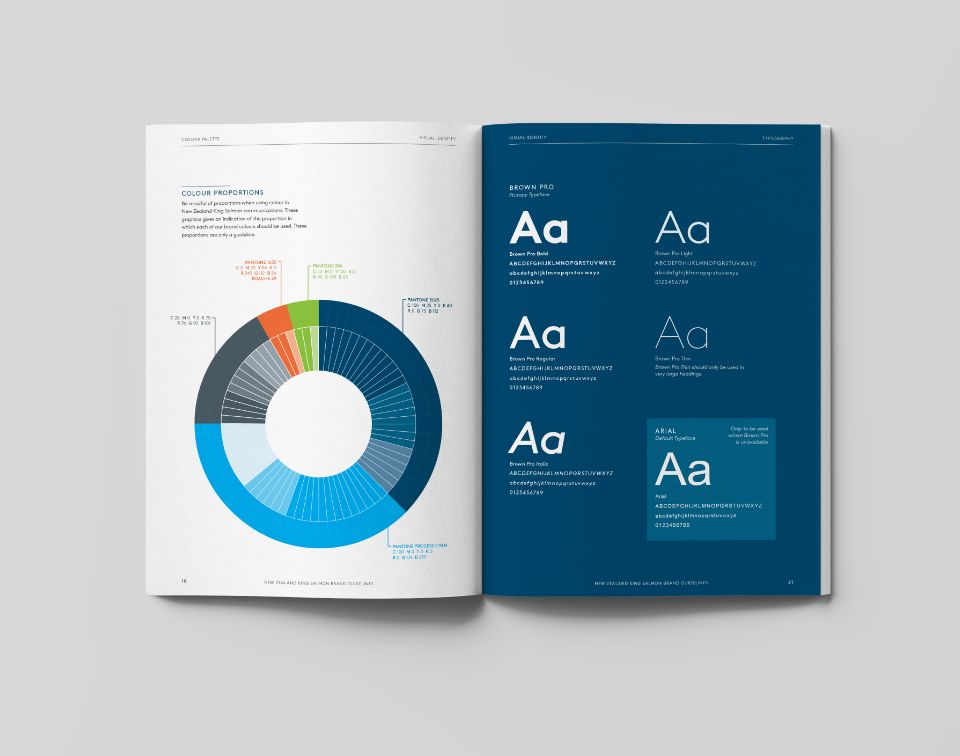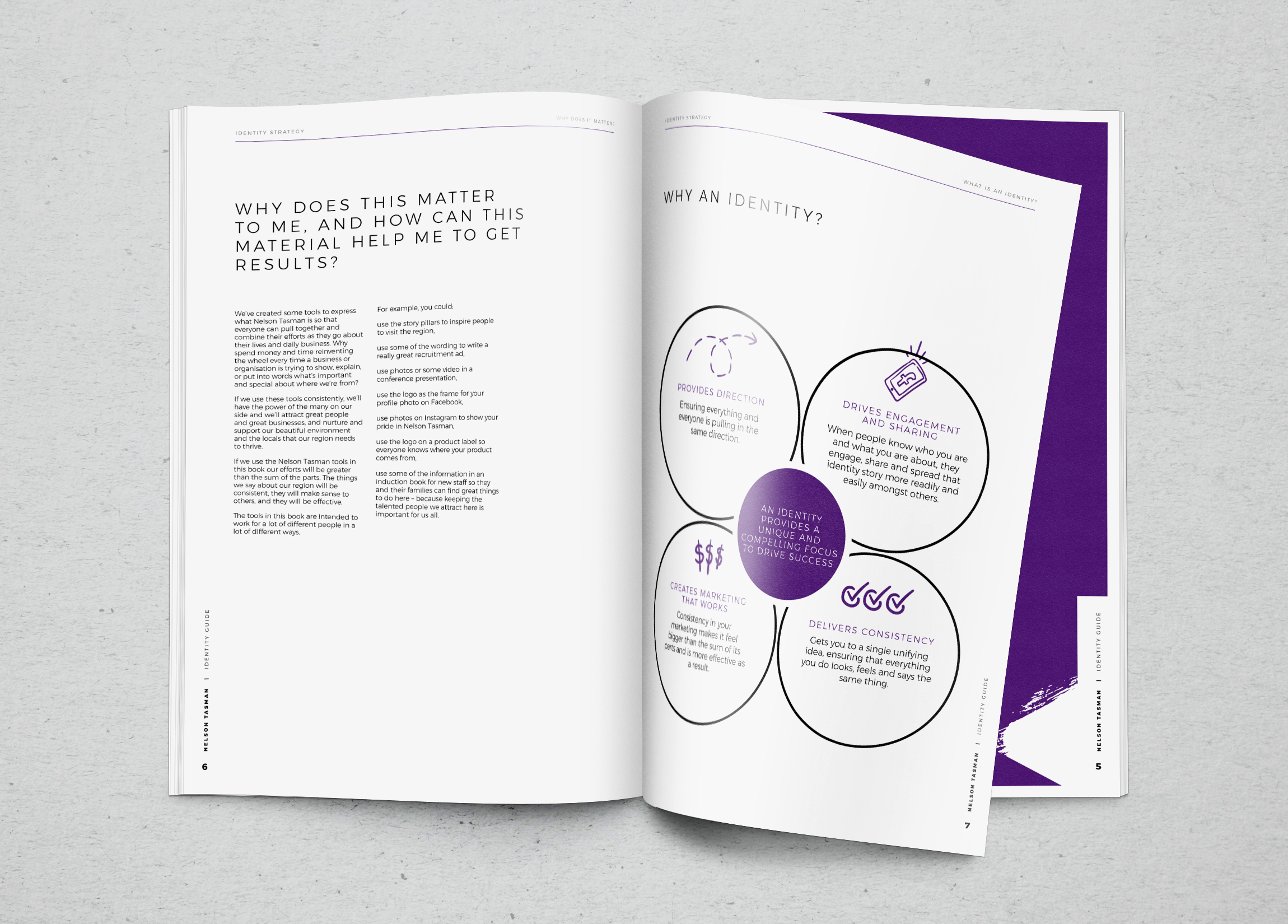Brand Guidelines — How to Create an Effective Brand Identity Kit

‘Inconsistent branding’ is an oxymoron. For branding to be branding, it must be consistent. Branding is a system of applying your brand across all points of your organisation that a customer connects with. In a busy noisy world, with so many distractions; it’s the consistent brands that will stand out. If your branding is messy and inconsistent, it just adds to the confusion.
As the owner of a brand, do you spend time working with your team and suppliers to keep all your branding consistent? Does it annoy you when your logo is reproduced incorrectly, off-colour or squished? Does it bug you to see your team misrepresent your brand on social media, writing in the wrong tone or in a personality that is different from your brand? Brochures, signs, advertising and websites can all represent your brand in different ways. Keeping tabs can be a nightmare. Never fear there is an answer – The Brand Guide Book.
What are brand guidelines?
Brand Guidelines clearly outline how your brand assets should be used in the real world.
They include all the elements of a company’s identity such as logos, colours, fonts, and taglines and simple instructions on how to apply them to all your marketing material. Think of Brand Guidelines as a tool kit that team members and suppliers access when they need to build your marketing items.
Why do you need brand guidelines?
Brand Guidelines clearly outline how your brand assets should be used in the real world.
They include all the elements of a company’s identity such as logos, colours, fonts, and taglines and simple instructions on how to apply them to all your marketing material. Think of Brand Guidelines as a tool kit that team members and suppliers access when they need to build your marketing items.
1. Consistency
Consistent use of your brand assets builds a strong picture in your customer’s minds over time. It makes your brand easy to remember and recall. It’s hard to keep your brand consistent if you don’t have guidelines in place. Many businesses don’t create branding guidelines, and this leads to inconsistent marketing and poor customer experience.
2. Clarity
Brand Guidelines will help you communicate your brand standards to your team with clarity. This in turn enables your team to communicate your brand story with clarity to your customers and suppliers.
3. Excellence
They set your standard of quality and excellence and leave little room for compromise and low-quality outputs.
4. Unity
Well-written guides ensure that everyone that uses the brand is ‘singing from the same song sheet’. They help present your organisation to the world in a unified way.
5. Efficiency
Brand Guides create business efficiency. With decisions such as colours and fonts having already been made, team members can quickly make decisions when producing marketing items.
Downing Creative can help you create brand guidelines for your company that will give your team everything they need to stay on-message with each other and with customers. To get you started we have created a list of essential elements to include in your guidelines.

New Zealand King Salmon brand guidelines include logo, colour, typography, and core messages.
What should be included in the kit?
Brand Guides can be simple or comprehensive. The size and depth of your brand guidelines depend on how you will use them in your business. If you need to have high levels of control over every point that a customer engages with your business, then you may want to have more guidelines that are specified in a deeper way. If your business is less complex, smaller or with fewer branded items then a simpler set of guidelines can be created.
Here are some of the things that could be included:
- Strategic statements such as vision, mission, and values.
- Your logo. This can be a symbol, icon, or wordmark that represents your brand and what it stands for. The logo should also include how it should be used in its simplest form. This is normally black and white or one colour. It should show how small the logo can be shown.
- Access to a library of logos. These should be in various file formats and colour options. Some file formats could include pdf, ai, eps, jpg, png.
- Brand in text. How your company name and product names are written needs to be clearly specified. It is important that everyone uses the same version of your name in every communication. If your name is long, then an abbreviation may be acceptable. If so, what is the exact abbreviation?
- A company slogan. Most brands have one main message they want people to remember and associate with them.
- A colour palette. The colours should reflect the personality of the company and how they want people to feel when seeing them. Colours should be specified in a range of formats. A good branding kit should include CMYK and RGB files for printing, along with Pantone colours (if applicable).

- Fonts need to be specified for the kit. One font may be chosen as the core font of the identity. Another may be picked just in case the core font can’t be used.
- Stationery. Letterhead and envelopes should be included in the kit – with any fonts and printing specifications specified on them.
- Marketing Tools. business cards, profiles, brochures, or advertising templates
- Icons. Graphics that are used to clarify communication, such as symbols, or animated gifs.
- Tone of Voice. It’s important to remember that your presentation is a key part of how you want people to interact with the company. The tone may be welcoming, professional, formal, or fun and informal. Having some guidelines that show how all team members should write on public platforms such as Facebook and Instagram is useful to maintain consistency.
- Signwriting examples. This can include vehicles, building exteriors and wayfinding.
- Merchandise examples such as gifts and sponsored items
- Advertising templates for the most popular media channels
- Photo style and image library and the sort of images that are useful for marketing
- Web Banners and Social Media Images

Brand Guidelines for Nelson Tasman
Optional items to include in your brand identity guidelines
- Website content styles
- Social media posts and content style
- PowerPoint presentation template
- Banners and tradeshow support material
- Signwriting specifications
- Uniform design
- Interior design
- Merchandise such as apparel or giveaways
Who is Downing?
Downing Creative Marketing has been based in Nelson, New Zealand since 1994. As a leading branding and design agency, we help organisations develop their brands and marketing to the highest standards. Brand Identity Design is one of our core services. We love to design and craft brands that meet our clients’ expectations and deliver results that help grow their business.